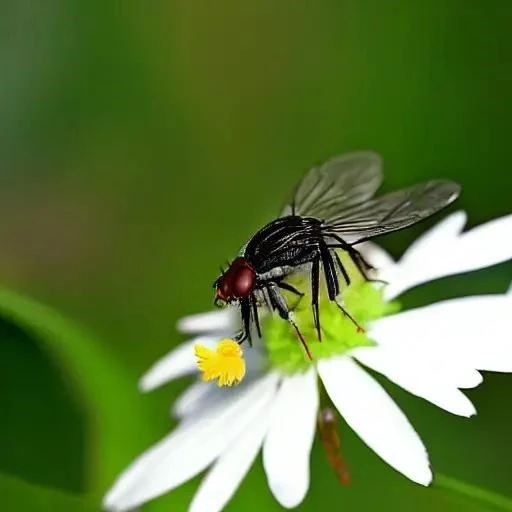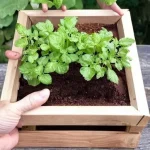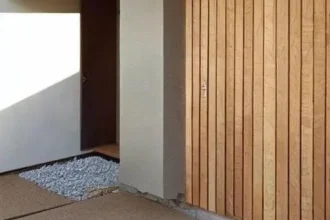For countless garden enthusiasts‚ the sight of buzzing insects flitting around prized petunias or vibrant verbenas often triggers an immediate sense of alarm. We instinctively associate these aerial acrobats‚ particularly flies‚ with annoyance‚ unhygienic conditions‚ or even plant damage. However‚ this ingrained perception‚ while understandable‚ dramatically overlooks a fascinating and incredibly beneficial ecosystem teeming right within our backyard havens. It’s time to re-evaluate our long-held biases and discover the remarkable‚ often unsung‚ roles these creatures play in fostering a thriving‚ resilient floral paradise.
Far from being mere pests‚ many species of flies are‚ in fact‚ diligent workers‚ contributing significantly to the health and vitality of your flower garden. From the elegant hoverfly‚ a master mimic of bees and wasps‚ to the robust tachinid fly‚ a formidable predator of destructive caterpillars‚ these tiny titans are pivotal players in the intricate dance of nature. Understanding their diverse functions—whether as industrious pollinators‚ voracious pest controllers‚ or essential decomposers—can transform your approach to gardening‚ shifting it from reactive control to proactive ecological harmony. This forward-looking perspective reveals a world where the buzzing presence you once dreaded becomes a welcome sign of a flourishing‚ balanced environment‚ demonstrating precisely why flies near my flower garden are often a blessing in disguise.
| Type of Beneficial Fly | Primary Ecological Role | Key Characteristics & Appearance | Impact on Garden Health |
|---|---|---|---|
| Hoverflies (Syrphidae) | Pollination & Pest Control | Often brightly colored‚ mimicking bees or wasps; larvae are slug-like and predatory. | Crucial pollinators for many flowering plants; larvae consume vast numbers of aphids and other soft-bodied pests. |
| Tachinid Flies (Tachinidae) | Biological Pest Control | Robust‚ bristly flies‚ typically grey or black; larvae are internal parasites. | Their larvae parasitize and kill a wide range of garden pests‚ including caterpillars‚ beetle larvae‚ and true bugs. |
| Robber Flies (Asilidae) | Predatory Pest Control | Medium to large-sized‚ often hairy‚ with a characteristic “beard” of bristles around their mouthparts. | Aggressive aerial predators‚ preying on other flies‚ bees‚ wasps‚ grasshoppers‚ and even beetles‚ helping to keep insect populations in check. |
| Long-legged Flies (Dolichopodidae) | Predatory Pest Control | Small‚ metallic green or bronze‚ with notably long legs; often seen darting on foliage. | Consume small‚ soft-bodied insects and mites‚ acting as micro-predators contributing to overall pest suppression. |
| Fungus Gnats (Sciaridae) | Decomposition (larvae) | Small‚ dark‚ mosquito-like; larvae are translucent and live in moist soil. | While sometimes a nuisance in high numbers‚ their larvae play a vital role in breaking down organic matter and cycling nutrients in garden soil. |
For a broader understanding of beneficial insects and their roles in sustainable gardening‚ explore resources like Gardening Know How.
From Nuisance to Natural Ally: Harnessing Their Power
The paradigm shift from viewing all flies as nuisances to recognizing their ecological value is profoundly empowering for any gardener. Consider the diligent hoverfly‚ a veritable jewel of the insect world. Not only do the adults‚ often mistaken for small bees‚ gracefully transfer pollen between blossoms‚ thereby ensuring robust fruit and seed production‚ but their larval forms are also incredibly effective biological control agents. These voracious‚ slug-like larvae can devour hundreds of aphids during their development‚ offering an organic and sustainable alternative to chemical insecticides. By integrating insights from entomological studies‚ we learn that a diverse fly population signifies a healthy‚ vibrant garden ecosystem‚ naturally capable of self-regulation.
Moreover‚ the less glamorous but equally crucial decomposer flies‚ such as certain species of fungus gnats‚ play an indispensable role in nutrient cycling. Their larvae‚ residing in the moist soil‚ diligently break down decaying organic matter‚ releasing essential nutrients back into the earth for your plants to absorb. This vital process‚ often overlooked‚ underpins the fertility and long-term health of your garden beds‚ reducing the need for synthetic fertilizers and fostering a truly regenerative environment. Embracing this multifaceted utility transforms our relationship with these buzzing visitors‚ turning every observation into an opportunity for deeper ecological understanding and enhanced garden productivity.
Cultivating a Balanced Ecosystem: Practical Steps
Encouraging a beneficial fly population doesn’t require complex interventions; rather‚ it involves thoughtful‚ sustainable gardening practices. Firstly‚ reducing or eliminating the use of broad-spectrum pesticides is paramount. These chemicals indiscriminately harm beneficial insects alongside pests‚ disrupting the natural balance; Secondly‚ diversifying your plant selection to include a variety of flowering plants that provide nectar and pollen throughout the growing season will attract and sustain these helpful insects. Consider planting flat-topped flowers like dill‚ parsley‚ and cilantro‚ or composite flowers such as daisies and sunflowers‚ which offer easily accessible food sources.
Furthermore‚ providing a small‚ consistent water source and areas of undisturbed ground can create attractive habitats for various fly species to lay eggs and complete their life cycles. Integrating compost and organic matter into your soil also supports the decomposer flies‚ enriching the soil structure and nutrient content. By consciously designing your garden to be an inviting sanctuary for these often-misunderstood creatures‚ you are not merely tolerating their presence; you are actively cultivating a dynamic‚ self-regulating ecosystem. This forward-looking approach ensures a garden that not only flourishes but also contributes positively to broader biodiversity‚ demonstrating a commitment to environmental stewardship.
A Future Flourishing with Understanding
The journey from fly aversion to appreciation marks a significant evolution in our gardening philosophy. It underscores a powerful lesson: nature’s solutions are often the most elegant and effective. By embracing the multifaceted contributions of flies‚ we move beyond simplistic labels of “good” or “bad” insects‚ fostering a more nuanced and respectful relationship with the natural world. This optimistic outlook allows us to view every buzzing encounter not as an intrusion‚ but as a testament to the thriving biodiversity within our own green spaces. The future of gardening‚ undoubtedly‚ lies in understanding and working harmoniously with all its inhabitants‚ ensuring a vibrant‚ sustainable‚ and endlessly fascinating botanical experience for generations to come. So‚ next time you see flies near your flower garden‚ remember: they might just be the unsung heroes protecting your precious petals.






